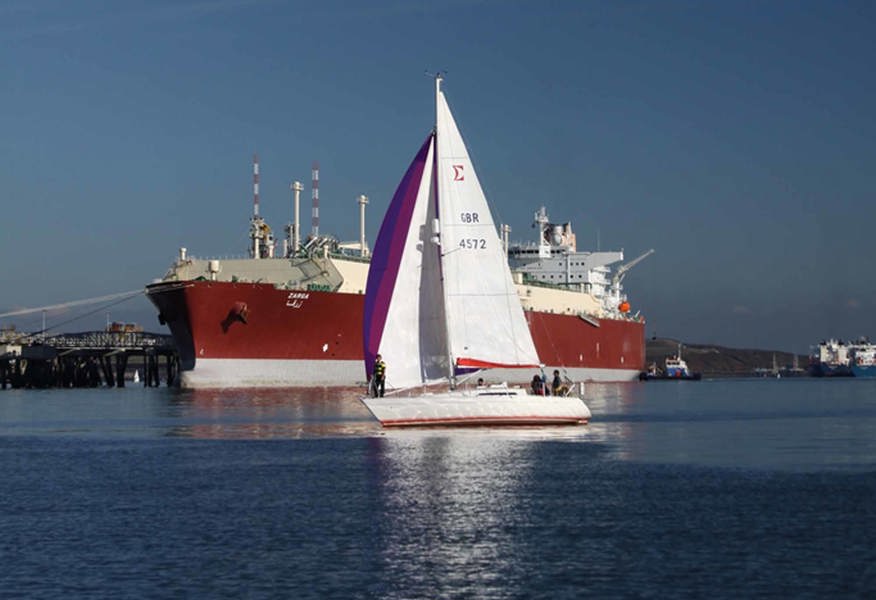As featured in the Port's newsletter, OnBoard, Autumn 2021.
The Milford Haven Waterway is a fantastic stretch of water for sailing, power boating, kayaking, the list goes on, however all of this leisure activity coexists with some seriously large commercial vessels and it’s important to remember that.
The Q Max LNG vessels that come into the Haven are the same length as three and half football pitches and half as high as the London Eye. Compare that to a 20ft sailing boat and the latter is dwarfed so it’s crucial that smaller craft do not get in the passage of an oncoming vessel. There is in fact a nautical alternative to the Highway Code that is in place to reduce the risk of collisions between vessels called the International Regulations for Preventing Collisions at Sea (known as the COLREGS).
Here is some useful guidance to help you stay safe while enjoying the water:
- Keep a proper lookout – You must be fully aware of the boating environment, especially in bad weather, restricted visibility, or darkness. Don’t forget to look all around – even behind you.
- Know your speed – You should continually assess the safety of your vessel’s speed. It is easy to assume that a larger vessel is going slower than it is, but it will take much longer to slow down than you think and it’s manoeuvrability will be affected.
- Be visible – At night make sure your navigation lights can be seen. If you think you have not been seen, get out of the way. From the bridge of a large vessel, the captain or pilot may lose sight of you more than a third of a mile ahead. If you can’t see the bridge they can’t see you.
- Know the sound signals – Vessels often use sound or light signals to communicate. If you hear five short blasts, the master or pilot is trying to tell another vessel that they are unsure of its intentions. Check and see if it is for you, if it is make your intentions clear and give way.
Water Ranger at the Port of Milford Haven, Brian Macfarlane, said “The oil tankers and gas ships that we have on the Waterway are truly enormous and it is everyone’s responsibility to ensure they navigate safely. Remember that just because you can see them doesn’t mean they can see you, so please bear these tips in mind when you’re next out on the water.”
More safety advice is available online at www.mhpa.co.uk/safety-on-the-water


